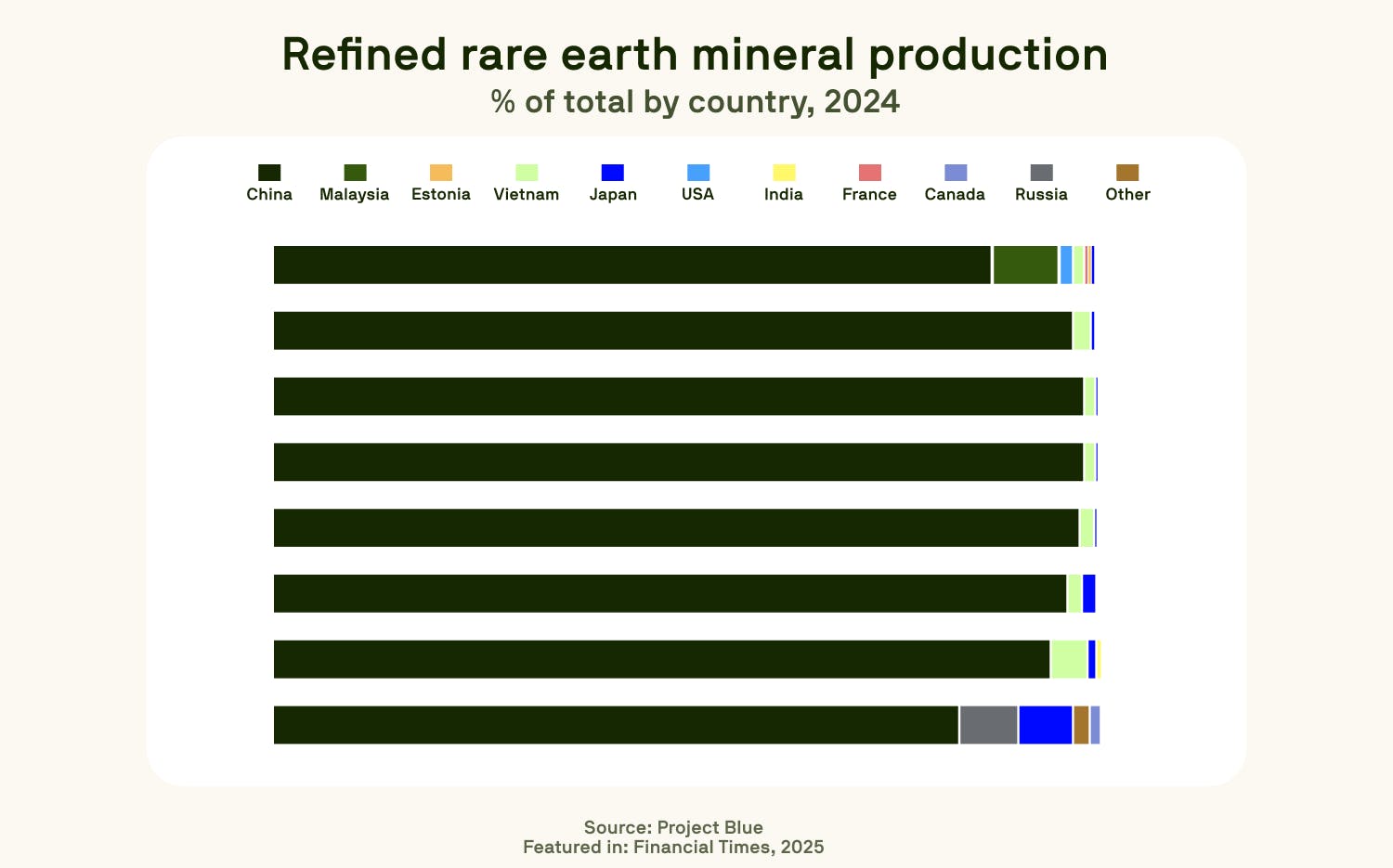A few weeks ago, China suspended exports of seven critical rare earth metals. As a result, EV manufacturers, electronics suppliers and aerospace players began reassessing their sourcing strategies and cost baselines. This action revealed once again how concentrated the global supply chain for critical materials truly is.
Rare earth elements refer to a group of 17 metals that are widely distributed in the Earth’s crust. While not geologically rare, they are essential for the development of modern technologies. These materials play a critical role in the production of everything from wind turbines and semiconductor chips to electric vehicles and military systems.

Germany’s carmakers also play a leading role in global trade. In 2019, German motor vehicles were exported globally to a value of €225 billion, accounting for nearly 17 percent of the total German exports. This industrial strength has always been underpinned by engineering precision and manufacturing quality. But as labor costs continue to rise, the economics of this sector is becoming increasingly volatile. While German vehicles still set standards for reliability and innovation, the cost of producing them is increasing to a level that challenges their place in a highly competitive global supply chain.
China controls over 70% of the global rare earth supply chain, and it owns nearly all of the refining capacity for these materials. When this single source is interrupted, the consequences are not limited to a delay in logistics or procurement. Instead, the disruption travels deep into the product lifecycle, from the bill of materials right through to the final assembly. The latest restrictions specifically target what industry experts describe as “heavy” and “medium” rare earths, including dysprosium, terbium and samarium. According to the Financial Times, these are essential not only for high-performance magnets that can tolerate extreme heat but also for critical systems such as jet engines, missile guidance components and electric vehicle powertrains.










